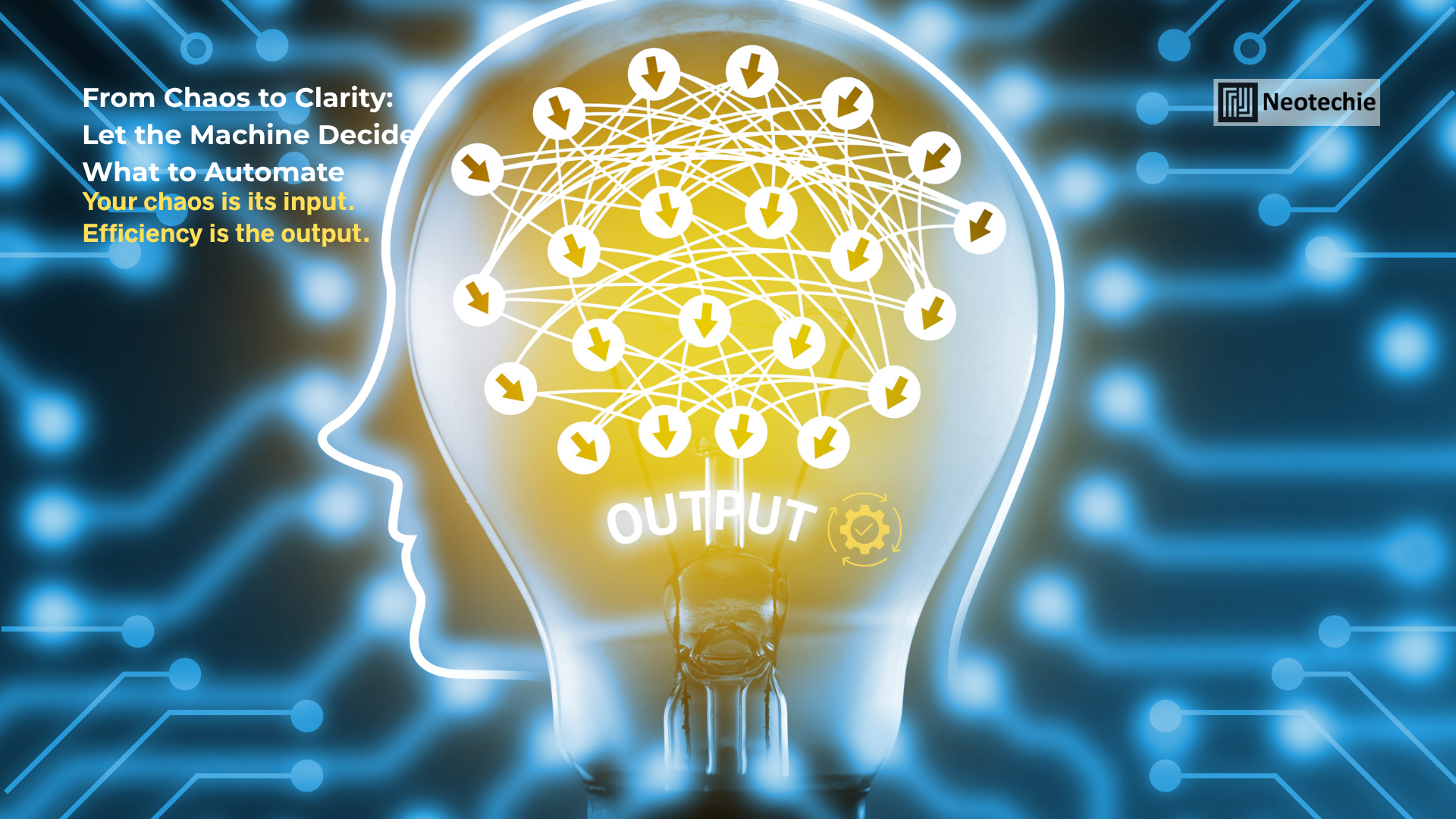Machine Learning That Watches and Learns: A Smart Way to Discover What to Automate
Automation isn’t just about doing things faster — it’s about doing the right things automatically. As businesses grow, operations often become tangled in a web of repetitive tasks and manual processes that drain productivity and cloud strategic focus. The key to untangling this web lies in behavioral analysis powered by machine learning (ML) — a sophisticated, intelligent method that doesn’t just act, it observes, learns, and prioritizes what should be automated first.
What Is Behavioral Analysis in Automation?
Behavioral analysis refers to the tracking and interpretation of how users interact with digital systems—where they click, what steps they take, how long they spend on certain tasks, and what patterns emerge across the organization. It’s a method that transforms vague assumptions into clear, actionable insights.
With machine learning, this data becomes gold. The algorithms watch behaviors over time, recognize inefficiencies, detect repetitive actions, and map out the logical flow of tasks. Instead of manually auditing every process, the system learns from the real-world habits of your team, helping you uncover exactly what to automate, why it matters, and where it adds the most value.
Why Behavioral Analysis Is the Smart Way Forward
- Objective, Data-Driven Decisions
Automation decisions based on gut feelings or limited snapshots can backfire. ML-based behavioral analysis provides real-time, data-backed insight that cuts through bias and assumption. By analyzing thousands of digital interactions, it creates a statistically sound foundation for your automation strategy. - Continuous Learning and Refinement
Unlike static process maps that quickly become outdated, machine learning continuously evolves alongside your business operations. As workflows shift and new tools are introduced, ML adapts—ensuring that your automation priorities always reflect current business realities. - Task Prioritization by Impact
Not all tasks are created equal. ML identifies high-frequency, low-value tasks such as repeated data entry, unnecessary approvals, or inefficient navigation paths. These tasks, while small individually, often accumulate into massive productivity drains. Behavioral analysis allows companies to prioritize automation projects based on ROI, ensuring resources are directed where they’ll make the most difference. - Employee-Centric Optimization
Behavioral analysis doesn’t replace people — it empowers them. By offloading mundane, repetitive work, employees can focus on the parts of their job that require human insight, creativity, and emotional intelligence. This shift boosts morale, improves job satisfaction, and leads to better overall team performance.
How It Works: From Watching to Automating
- Data Collection from Digital Activities
ML platforms passively collect data from your digital environments — tracking mouse clicks, scroll patterns, time spent per screen, and the frequency of specific actions across different apps. This comprehensive behavioral snapshot forms the raw input for automation analysis. - Pattern Recognition and Process Mapping
Advanced algorithms sift through the collected data to identify recurring sequences of actions. If ten employees follow the same multi-step process to generate a weekly report, ML groups that into a pattern and highlights it as a candidate for automation. - Efficiency Scoring
Every task is analyzed for its time consumption, frequency, and impact on workflow bottlenecks. These tasks are then assigned an efficiency score, which helps stakeholders understand where automation will yield the highest gains in performance. - Opportunity Surfacing
With all scoring and pattern mapping in place, ML surfaces the most promising automation candidates. These can range from automated form submissions to triggered communications or system integrations that eliminate redundant steps in a workflow.
Use Case: Smart Automation in Finance Operations
A mid-sized financial services firm used behavioral ML to analyze back-office workflows. The system discovered that 35% of employees’ time was spent toggling between legacy apps and spreadsheets for data entry — something no one had flagged manually.
Within weeks, the company automated the data aggregation and validation process, reducing manual work by 60% and cutting reporting errors by nearly 90%.
The result? A smarter, leaner operation with happier analysts and a stronger bottom line.
Business Transformation Starts with Smarter Automation
True business transformation doesn’t begin with technology — it begins with a deeper understanding of how your business operates on a behavioral level. With ML-based behavioral analysis, transformation becomes measurable, scalable, and human-centric.
By letting machine learning observe how your teams work, you create a live blueprint of operational reality — not a theoretical model, but one based on what’s actually happening. This empowers leadership to:
- Identify and eliminate digital friction points
- Automate redundant activities that waste talent and time
- Improve operational efficiency without disrupting what works
- Align teams around smarter, faster, and more strategic work
It’s a transformation driven by intelligence, not just implementation. The difference? More impactful change, better resource utilization, and a workplace that’s built to scale.
Whether you’re aiming to become more agile, reduce costs, or create a digital-first culture, intelligent process discovery through behavioral ML sets the foundation for sustainable transformation.
Neotechie’s Intelligent Automation: Learning How You Work to Automate What Matters
Neotechie’s Process Discovery service uses Advanced Machine Learning and Computer Vision technologies to analyze your existing business processes and identify areas ripe for automation. By examining workflows and capturing visual data from documents or digital interfaces, our solution highlights inefficiencies, bottlenecks, and repetitive tasks, giving you a clear roadmap for where automation can have the most impact.

